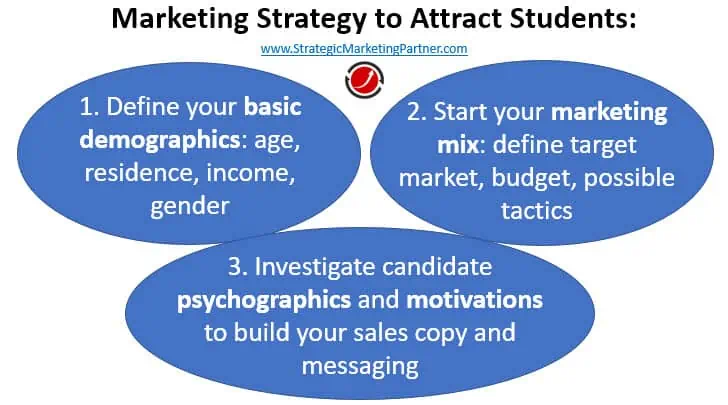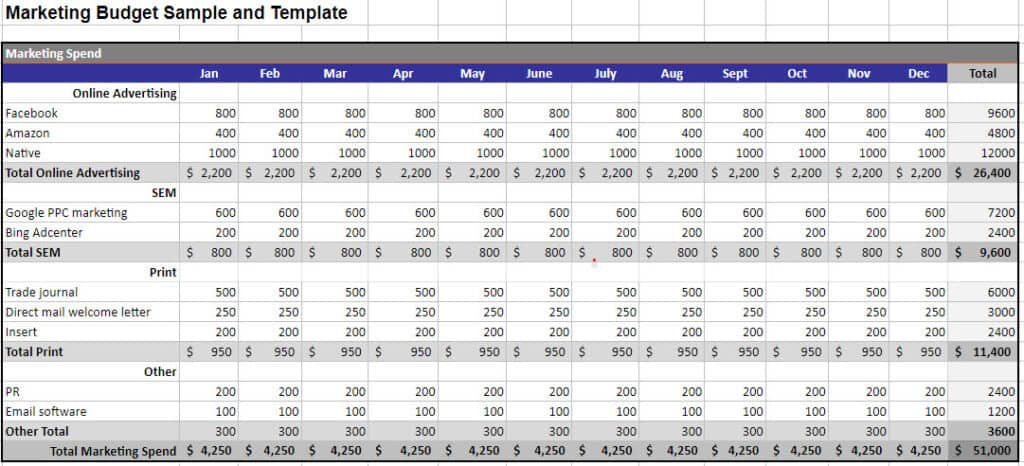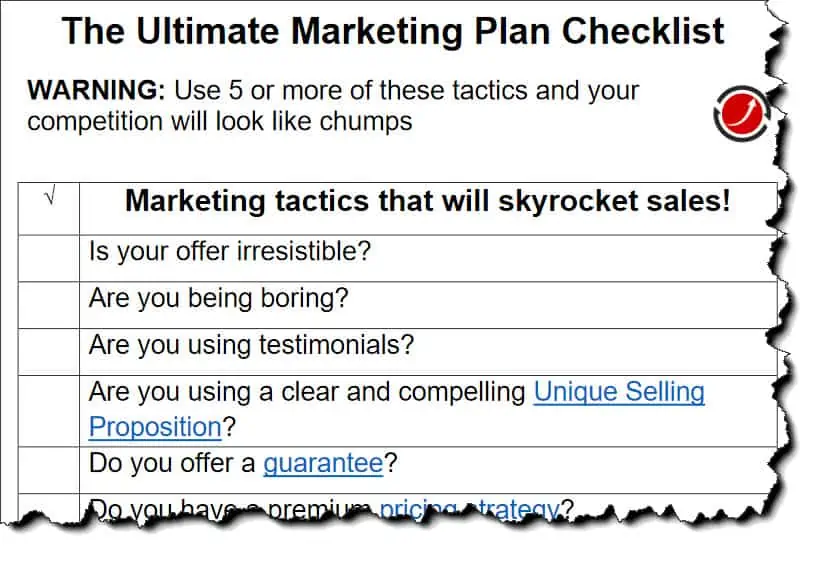How Manufacturing Benefits the US Economy and Why This is Important
Manufacturing plays an absolutely crucial role in every economy. This is especially true for the United States (USA) economy, largely […]
Read More »Become a successful marketing consultant: Learn more

A superior marketing strategy focused on attracting students is core to any great school.
Whether you are attracting new students or retaining current students; your school should develop an excellent marketing strategy supported by a well-developed plan in order to grow your student base.
A school can attract more students by sticking to the basics of marketing:
This tutorial offers many strategies and tactics for you to attract new students to your school.
Marketing your school is a necessary way of standing out from the competition by convincing your target market that your school is not just worth the price, but is an absolutely necessary step in the right direction.
And you can do that through marketing.
But marketing isn’t the entire picture.
You have to have the business model down first. Do this by working on your Customer Value Proposition first, and then you can do your research and can build your Marketing Mix so you can communicate with your ideal customers.
This guide highlights some marketing strategies any school, college or university can use to increase student enrollment.
Whether you are designing your marketing strategy or your marketing plan, nothing is more important than knowing who your ideal student is.

Start with these demographic basics …
Once you have this basic information you can start to develop your direct mail campaign, determine who and how many ideal customers are in your target market, and get an idea for how much of a marketing budget you may need.
These four tutorials will help you get started immediately:

Now that the basics are in place, you can begin to develop your sales copy and determine how to best communicate your message. Here are some helpful starting points:
An excellent place to start is to figure out how to use the word FREE in your marketing messaging. This is the most powerful word in the marketer's dictionary, and should not be overlooked. For a tutorial on how to do this go here: How is "FREE" used in Marketing? (5 Clever strategies). To support this tactic, see how McDonald's uses FREE in their marketing here: What is Operational Excellence and Why is it Important?
Do your market research. The more you can learn about your ideal customer, the bigger competitive advantage you will have over other schools competing in the same space because you will be able to target your message with more efficiency and reduce advertising waste.
Here are some of the best marketing strategies that can attract new learners to your school:
The best place to begin marketing your school and courses is by identifying what makes you unique.
A good place to start is with these two tutorials:
Since every school is unique, with different history and culture, you should define what distinguishes you from others. Unique factors in your school could be:
Or, more simply, maybe your school is focused on delivering more value than others based on unique price points for learning. Or a special guarantee for all students, such as a personal training school that guarantees job placement within one year of successfully completing their curriculum.
The unique features of your school are the defining factors of your schools' brand. These are the reasons that learners, parents and students recognize before applying for admission. The best way to collect these unique features is by asking your staff, parents, and current students what they like about your school.
One of the biggest mistakes schools make is neglecting their past and current students as a resource for future growth.
No, we aren’t talking about annoying them and asking them for donations.
First, your past and current students need to hear from you regularly.
But you must deliver value. And this takes work. You need to find out what is most valuable to them and then communicate often. This will mean segmenting your email list and direct mail list. You can learn more about this in our RFM analysis. Above all, avoid asking for money in your one outgoing communication per year as most will begin to resent this. It's ok to ask for contributions, but it if you do this it needs to be part of a larger communication plan that is primarily focused on delivering value. This is true in any business, not just education.
Second, your best customers (students and learners) are those that already know you, like you and trust you. Offer these students a great deal on more learning opportunities.
Third, build in a formal referral program that makes sense for your school. Once you have ongoing and regular communication built into your Marketing plan to communicate your message to past and existing students, this is an easy marketing tactic to develop and may just become your biggest source (low cost) of new students.
With your school programs ready and staff eager to receive students, it is time to promote your school and attract students. This involves several marketing activities, such as;
Marketing by word of mouth remains an effective way of informing your community about your school, courses and programs offered. For this, make use of those directly connected to the community, such as continuing students, staff, and parents. Like digital marketing strategies, don't shy away from asking for referrals. Study our Guerilla marketing strategies to get more ideas.
Sharing user-generated posts on social media platforms is an excellent way of marketing different aspects of your school. Once you've discovered a platform used by your current and prospective students, encourage your alumni to share content. You can also find out what they think about your school by engaging them through comments.
This is also a fantastic area to promote testimonials and case studies. After all, your customers can say believable things about your school that you could never say.
Showing your numbers is the best way to prove that your school is worth attending. Most parents and students won't consider applying for a school that has no proof of success. That said if your school has been operational for some time, share your graduation rates and other key statistics. Good figures are a clear indicator that your staff is dedicated to ensuring student success. Start by measuring your important, internal, Key Performance Indicators (KPIs) and from this you can develop the statistics that are most likely to inspire enthusiasm from potential students.
Joining competitions, or creating your own, is another good way of ensuring that your school gets noticed by the local community. This is a great example of guerilla marketing.
Competing in programs, such as math league, music competitions, fitness contents, and sports is a good way of getting your school in front of parents and students. However, remember that this is a long-term marketing strategy, as you should have these programs in place in the first place.
Marketing a university is quite complicated due to the various courses and programs offered, not to mention the stiff competition. However, the following 5 steps are crucial in developing an effective university marketing plan.

Go here for more information on building your Marketing Mix, a.k.a. the 4 P’s.